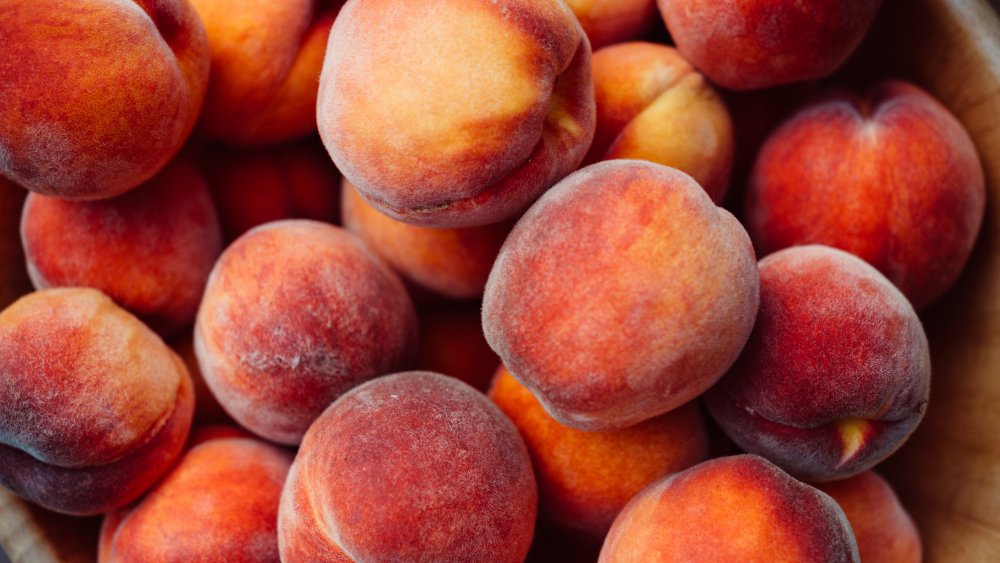The Real Difference Between Peaches And Nectarines
Summer means stone-fruit season and while most of the world is able to tell the difference between a plum and an apricot, peaches and nectarines are slightly more difficult to differentiate between, given how similar they are. They're both great in summery salads, cobblers, and turned into preserves. They even share a history.
Nectarines and peaches both originate in China, but were brought to the West where they quickly became popular in orchards and markets (via Chatelaine). Peaches were brought to the United States during the beginning of the 1800s. The nectarine, on the other hand, wasn't readily available to the masses until the 1940s and 1950s. During this period, the heartier and longer-lasting version of the peach was bred in California so it could withstand transport across the country (via Good Housekeeping).
But what is the real difference between the peaches and nectarines?
The difference between a peach and a nectarine
Some people believe that the nectarine is a cross between a peach and a plum, but they'd be mistaken (via Martha Stewart). Technically speaking, the nectarine is a type of peach. The biggest difference between the two is that a peach has a fuzzy exterior, while the nectarine has smooth skin. This difference is purely genetic and is due to a recessive gene. They're so similar, in fact, that botanists have observed nectarines growing on peach trees.
Peaches tend to be larger than nectarines and are generally softer and juicer as well. The color of peaches tends to be lighter than nectarines. Nectarine color can range from yellow, to deep red, bordering on purple.
If you come across a recipe that calls for one, you can certainly use the other as a substitute with no problem! In fact, often recipes call for removing the fuzzy bits from the peach skin, as it can become tough when it gets cooked.

